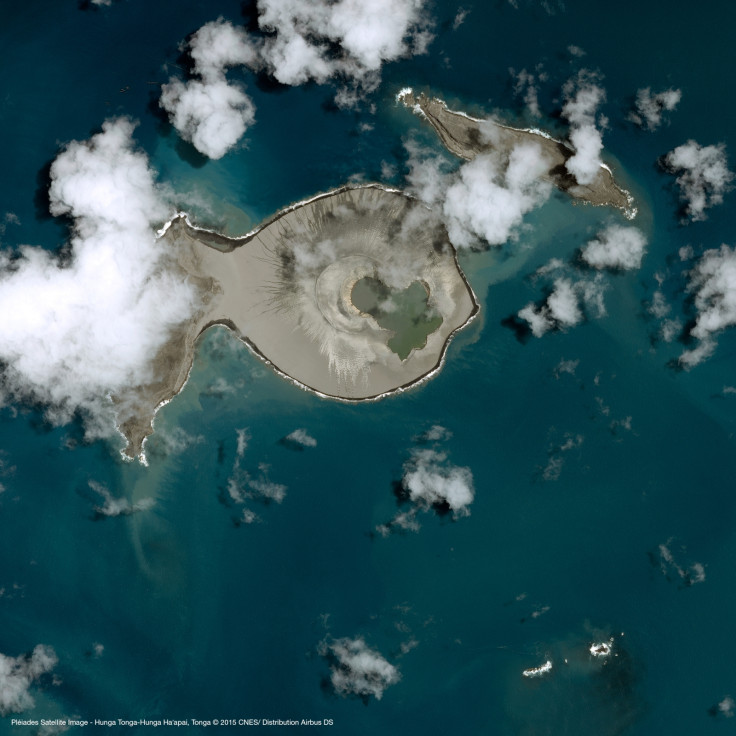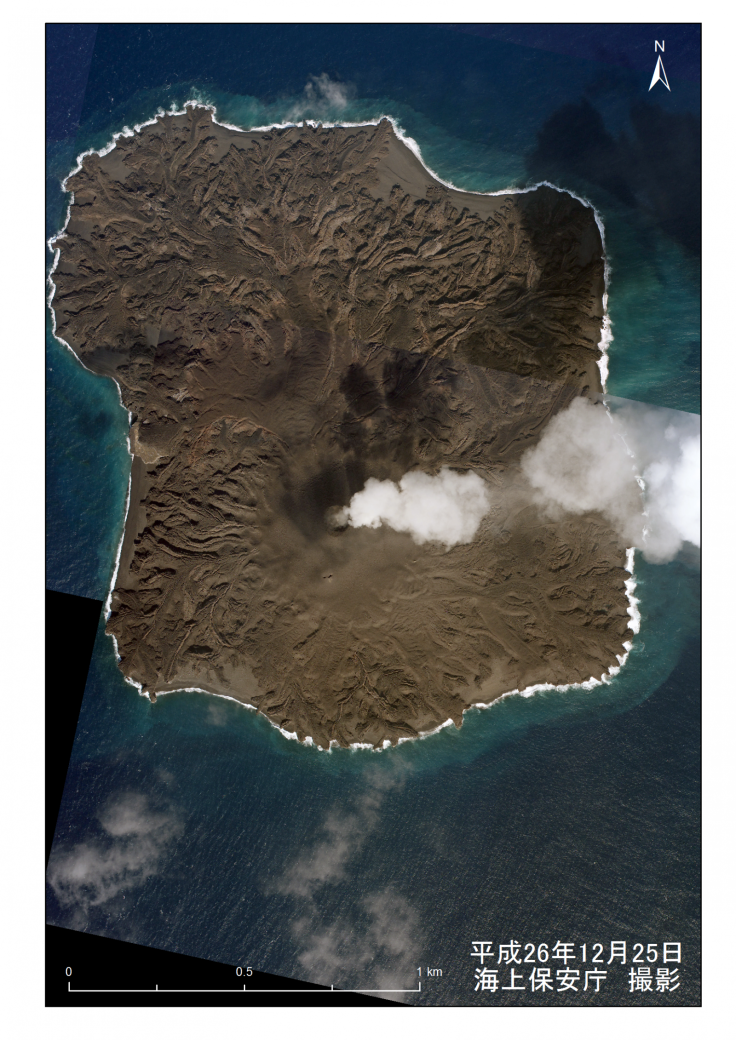Hunga Tonga: Underwater volcano creates new island in Polynesian archipelago

An underwater volcano just off the Tonga archipelago has created a new island after spewing ash and lava for almost a month.
The volcano named Hunga Tonga has created an island half a mile long. It is mostly made of ash and has formed around the crater.
Satellite images from France's government agency responsible space policy, CNES (Centre National d'Etudes Spatiales), show before and after pictures of the newly-formed island, sitting between two other landmasses.
The images, from the Pleiades satellite, show the island between the islands of Hunga Tonga and Hunga Ha'apai. The eruption has stripped all of the vegetation from both islands.
However, the Hunga Tonga volcanic island is not expected to last, experts said. Due to its weak composition, it is expected to erode within several months.
The volcano is located in the 'Ring of Fire' region – an area in the Pacific Ocean that is home to over 75% of the world's active and dormant volcanoes.
The Ring of Fire is a horse shoe shape spanning about 25,000 miles and is associated with almost continuous series of oceanic trenches, volcanic arcs, volcanic belts and plate movements.
The most recent activity of Hunga Tonga began on 19 December and the eruption is ongoing.
Underwater volcanoes push up rock, wet ash and cooling magma – the build-up of which leads to the formation of new islands.

Another volcanic island appeared off the coast of Japan in November 2013. Initially called Nii-jima, the island grew so large it ended up merging with nearby island Nishinoshima.
An image from Japanese authorities from December 2014 shows the island is going strong, with the volcano continuing to erupt and add to the land mass.
Initially, it was thought this volcanic island would erode back into the sea once the volcano stopped erupting, but it now appears the island could become a permanent feature.
© Copyright IBTimes 2024. All rights reserved.







